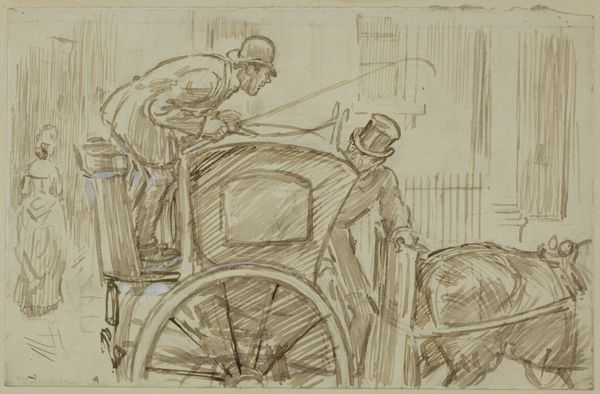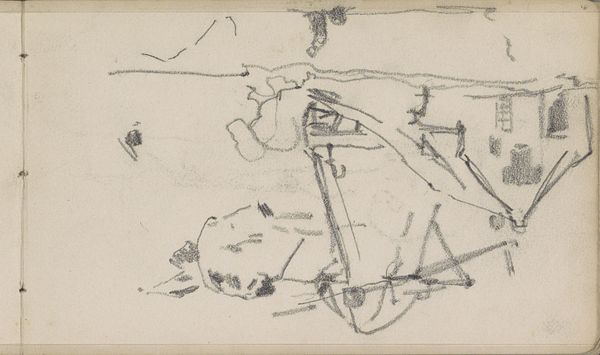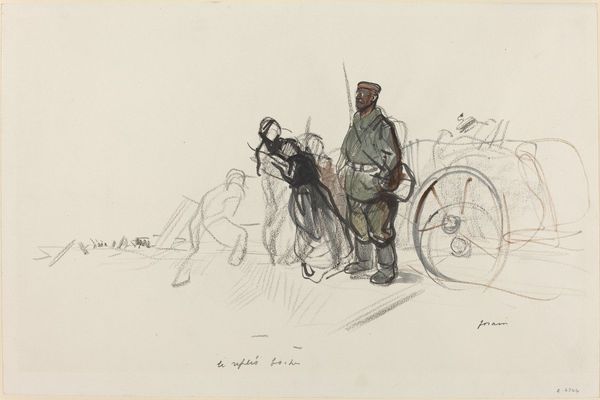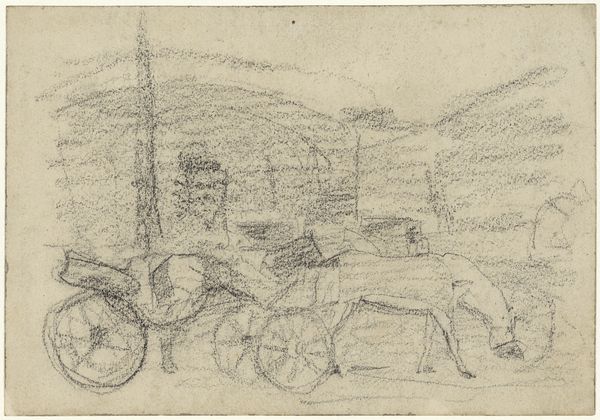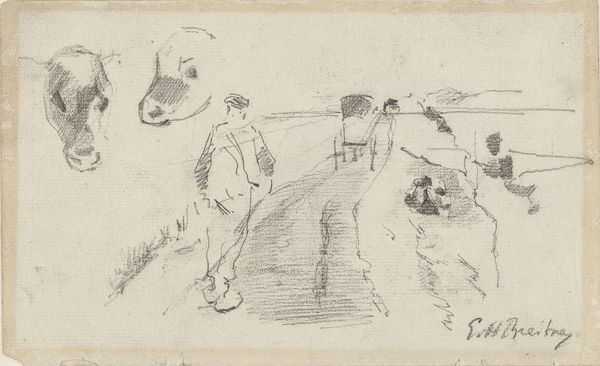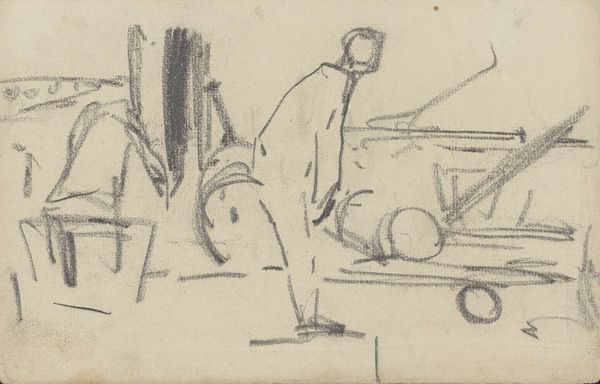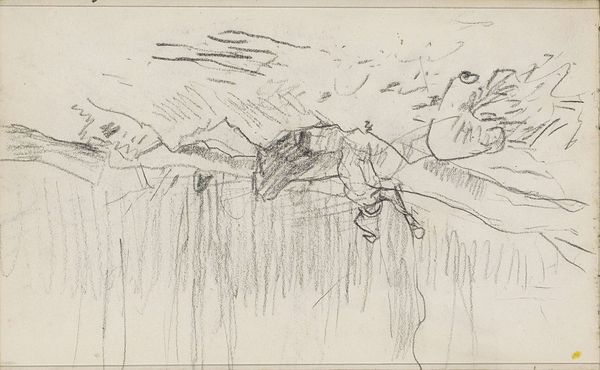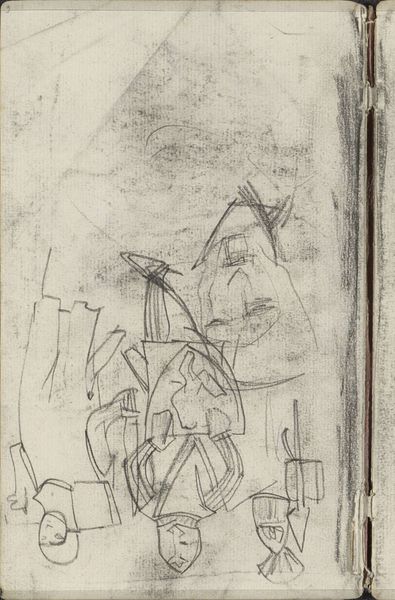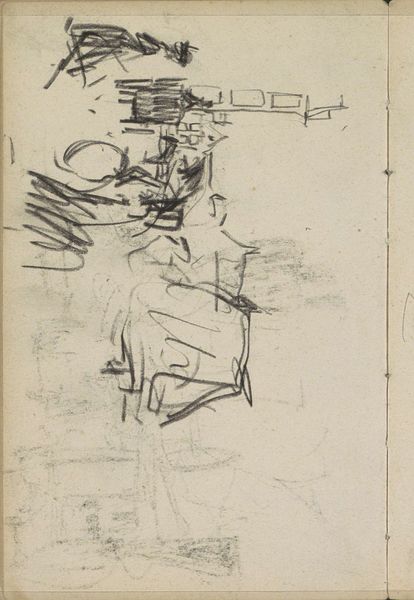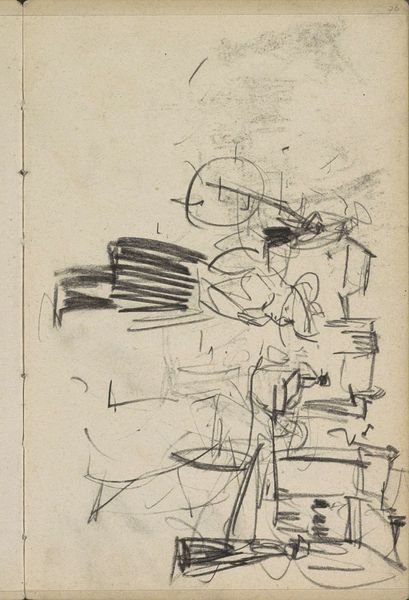
drawing, ink
#
drawing
#
figuration
#
ink
#
cityscape
#
realism
Dimensions: height 163 mm, width 100 mm
Copyright: Rijks Museum: Open Domain
Editor: So, this is George Hendrik Breitner's "De Petroleumman," a drawing in ink created sometime between 1867 and 1923. It's currently housed in the Rijksmuseum. The rapid, almost frantic linework makes me feel like I'm glimpsing a fleeting moment in the city. What stands out to you most about the composition? Curator: Precisely the quality of line. Observe the efficiency with which Breitner evokes form. The hatch marks above and behind the figure denote depth and shadow with remarkable economy, whilst simultaneously flattening the pictorial space and directing the viewer’s focus back to the picture plane itself. Consider how the density of lines varies, creating a visual rhythm across the image. Where is the line most dense, and what does this imply? Editor: It’s densest around the petroleum barrel and the figure’s back, giving them weight and volume, I guess? Almost like he's suggesting three-dimensionality using only lines. But how important is it that we identify what is depicted, and how it informs our viewing experience? Curator: Identification serves as a preliminary guide, but the formal elements are of primary concern. The interaction between line, form, and space is what shapes our visual understanding. The rough sketch conveys a dynamic sense of immediacy and informality by its graphic, linear treatment, that a fully modeled work would necessarily sacrifice. Notice that the lack of detail directs our eye to appreciate the subtle relationship among tones. This distribution lends an innate aesthetic harmony. Editor: So it's less about *what* it is and more about *how* it is? Curator: Precisely. Focus on the materiality of the medium, the artist's hand, the pure visual experience. The subject becomes almost incidental when one truly apprehends the aesthetic qualities present. Editor: I see... I was so caught up in trying to understand what it *meant,* but now I'm noticing the simple beauty of the lines themselves. Thanks! Curator: My pleasure. A shift in focus allows us to view even the most common subject with fresh eyes and deeper appreciation of art.
Comments
No comments
Be the first to comment and join the conversation on the ultimate creative platform.
